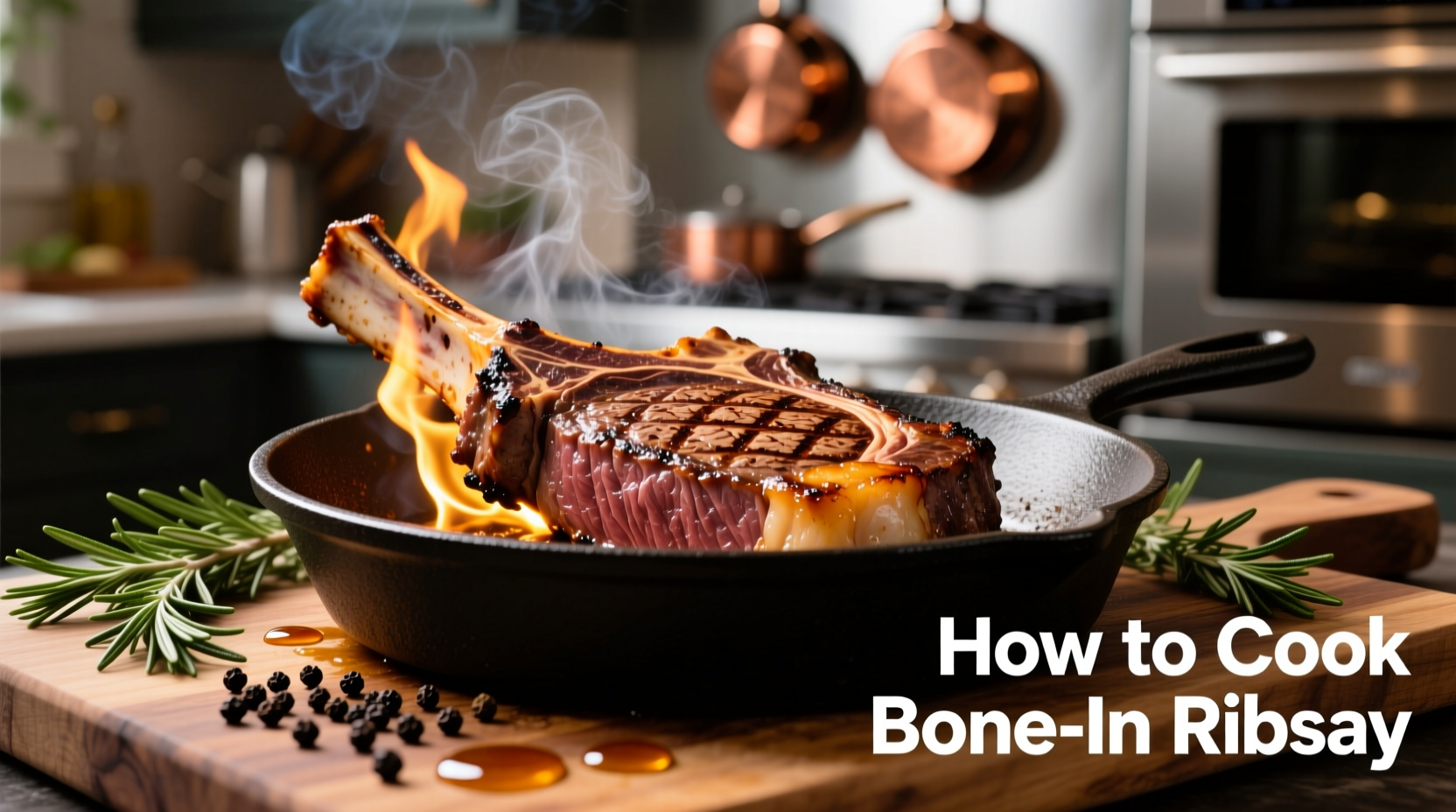The Bone-In Ribeye Advantage: Why It’s Worth the Splurge
Bone-in ribeye steaks deliver superior flavor and moisture compared to their boneless counterparts. The rib bone acts as a natural insulator during cooking, slowing heat transfer to the surrounding meat and creating more even doneness. As the marrow heats, it releases flavorful compounds that permeate the adjacent meat through capillary action. This cut typically features abundant marbling (intramuscular fat) rated USDA Prime or Choice, which melts during cooking to create that signature rich, beefy flavor.

Preparation Protocol: Setting Up for Success
Begin with a minimum 2-inch thick USDA Prime or Choice grade ribeye. Thaw frozen steak in the refrigerator 24-48 hours before cooking. Remove from refrigerator 60-90 minutes before cooking to reach proper room temperature – critical for even cooking. Pat the surface completely dry with paper towels; moisture prevents proper searing. Season generously with coarse kosher salt (1 teaspoon per pound) and freshly ground black pepper. For enhanced flavor development, apply salt 45 minutes before cooking to allow surface moisture absorption.
Cooking Method Comparison: Finding Your Perfect Technique
Three reliable methods deliver exceptional results depending on your equipment and preferences:
| Cooking Method | Best For | Prep Time | Active Cooking |
|---|---|---|---|
| Cast Iron Sear | Indoor cooking, precise temperature control | 15 minutes | 12-18 minutes |
| Grill Method | Outdoor cooking, smoky flavor preference | 20 minutes | 15-22 minutes |
| Reverse Sear | Thick cuts (2.5+ inches), ultimate precision | 45 minutes | 8-12 minutes |
Cast Iron Mastery: Step-by-Step Searing Process
Preheat oven to 275°F. Place cast iron skillet over high heat for 10 minutes until smoking slightly. Add high-smoke point oil (avocado or grapeseed) to create 1/8-inch layer. Carefully place steak in skillet away from you to avoid oil splatter. Sear undisturbed for 3-4 minutes until deep brown crust forms. Flip and transfer skillet to preheated oven. Cook until internal temperature reaches 115-120°F for medium-rare (approximately 8-12 minutes). During final 2 minutes, add 2 tablespoons butter, 2 crushed garlic cloves, and fresh rosemary to skillet, tilting and spooning melted butter over steak continuously.
Precision Temperature Guide: The Science of Doneness
Accurate temperature monitoring is non-negotiable for perfect results. The USDA Food Safety and Inspection Service recommends minimum internal temperatures of 145°F for whole cuts of beef with 3-minute rest time for food safety. However, culinary professionals typically pull steaks 5-10°F below target doneness to account for carryover cooking during resting:
| Doneness | Pull Temp | Final Temp | Visual Indicators |
|---|---|---|---|
| Medium-Rare | 120-125°F | 125-130°F | Warm red center, soft to touch |
| Medium | 128-130°F | 133-135°F | Warm pink center, slightly firm |
| Medium-Well | 135-138°F | 140-145°F | Small pink center, firm texture |
Always use an instant-read thermometer inserted horizontally into the thickest part, avoiding the bone. The USDA Food Safety and Inspection Service confirms that carryover cooking typically raises internal temperature 5-10°F during resting.
The Critical Resting Phase: Why Patience Pays Off
Resting allows redistributed juices to be reabsorbed into the meat fibers. During cooking, heat causes juices to migrate toward the center. Cutting immediately releases these precious juices onto your cutting board rather than staying within the meat. Rest for 10-15 minutes (5 minutes per inch of thickness) loosely tented with foil. For optimal results, place steak on a wire rack rather than a plate to prevent bottom steaming. This resting period completes the cooking process through residual heat while ensuring maximum juiciness.
Troubleshooting Common Ribeye Challenges
Problem: Uneven cooking with raw center and overcooked exterior
Solution: Ensure proper room temperature preparation and consider reverse sear method for thick cuts
Problem: Excessive flare-ups during grilling
Solution: Trim excess external fat and move steak to cooler grill zone temporarily
Problem: Poor sear development
Solution: Verify pan temperature (should smoke slightly) and ensure completely dry steak surface
Problem: Tough texture despite proper temperature
Solution: Check for adequate marbling (minimum USDA Choice grade) and proper resting time
Proven Serving Techniques for Maximum Impact
Slice against the grain at 45-degree angle in 1/2-inch thick pieces. The bone-in ribeye’s marbling means it pairs beautifully with both bold red wines like Cabernet Sauvignon and lighter options like Pinot Noir. Complement with simple sides that won’t compete with the steak’s rich flavor: roasted asparagus, garlic mashed potatoes, or a crisp arugula salad. For special occasions, finish slices with flaky sea salt and microplaned horseradish for an elegant touch that enhances without overwhelming.











 浙公网安备
33010002000092号
浙公网安备
33010002000092号 浙B2-20120091-4
浙B2-20120091-4